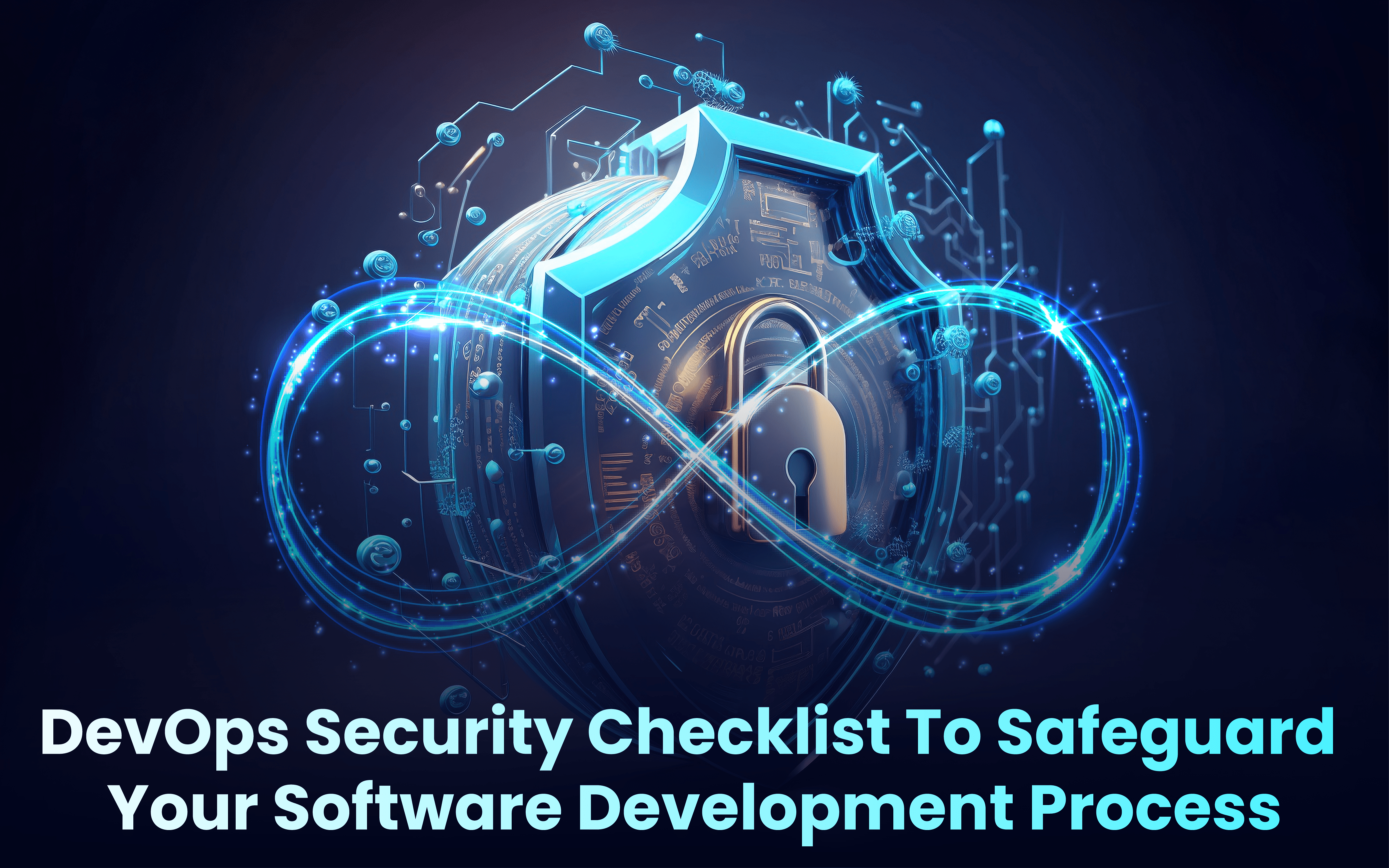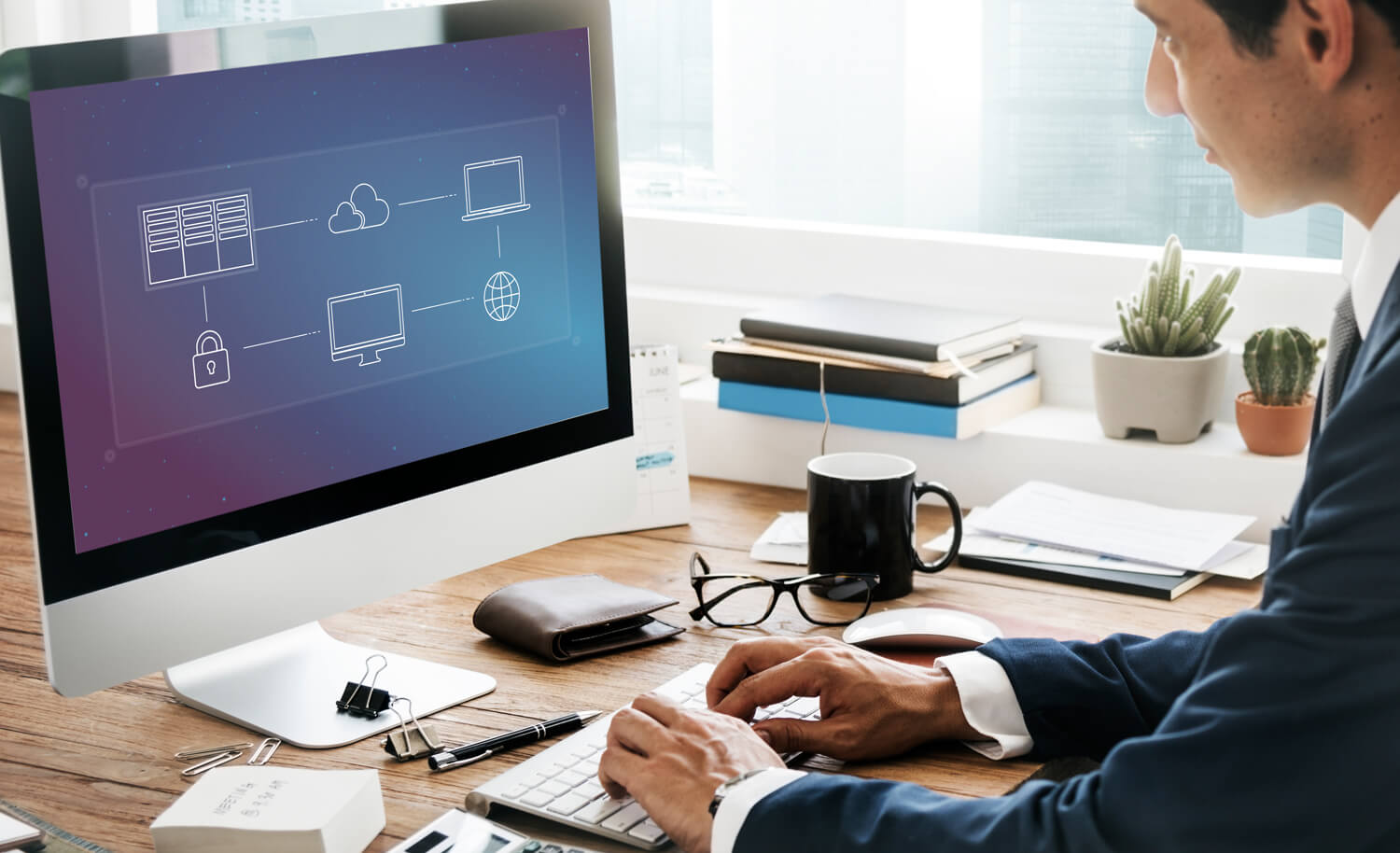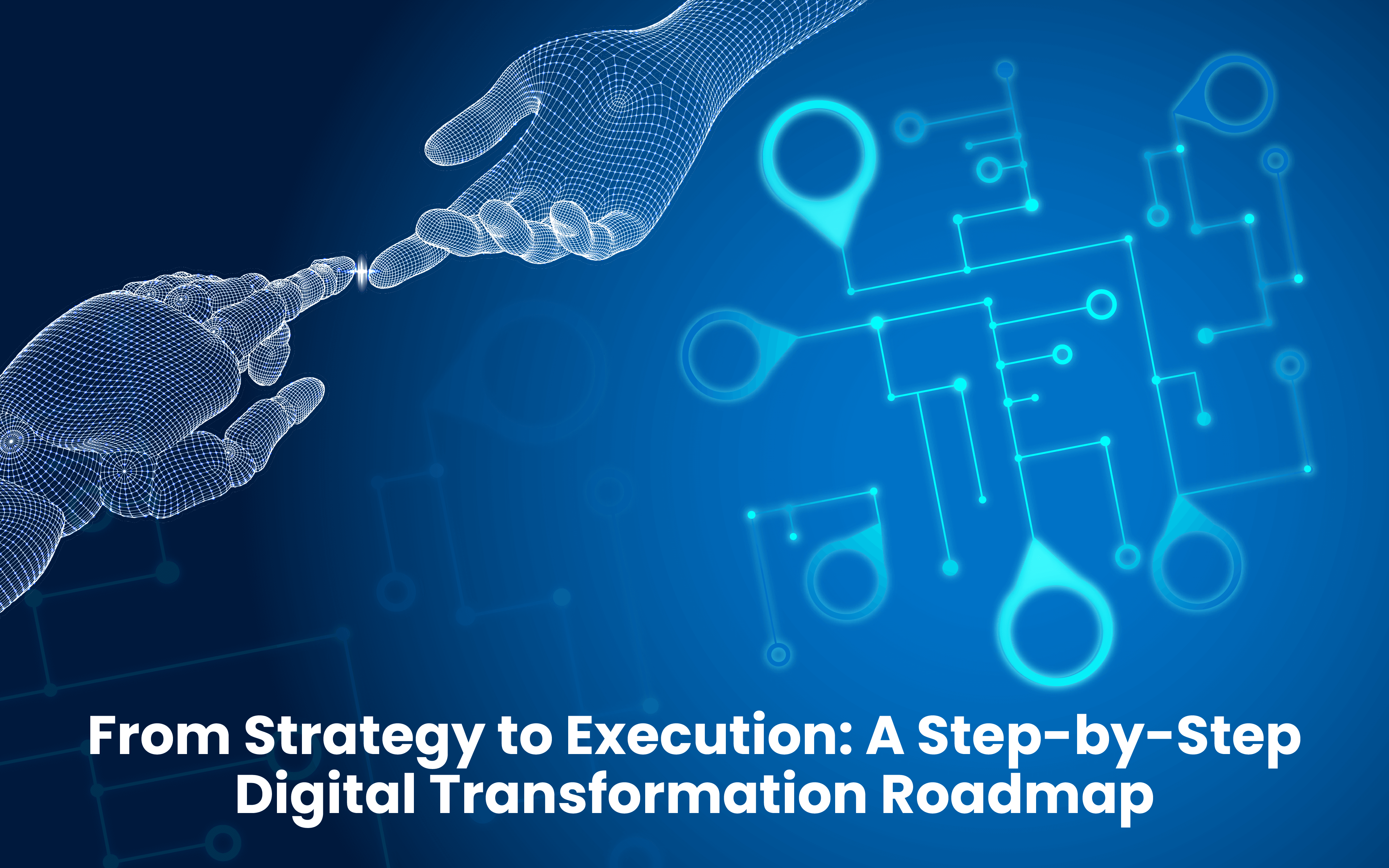Blogs
To know about all things Digitisation and Innovation read our blogs here.
DevOps
DevOps Security Checklist To Safeguard Your Software Development Process
SID Global Solutions
18 May 2023

Introduction
In today’s fast-paced and ever-evolving digital landscape, ensuring the security of your software development process is crucial. DevOps, a methodology that combines development and operations, has gained immense popularity for its ability to accelerate software delivery. However, it’s essential to integrate robust security practices into the DevOps workflow to safeguard against potential threats and vulnerabilities. This comprehensive guide provides an in-depth exploration of the DevOps security checklist, offering step-by-step recommendations. By following this checklist, you can fortify your software development process and protect your applications from security breaches.
Also Read: Why Observability is Crucial for Modern Software Systems?
Establishing a Secure Development Environment
- Secure code repositories: Utilize secure version control systems like Git, which provide strong encryption and authentication mechanisms. Implement access controls to ensure that only authorized individuals can make changes to the codebase. Use techniques such as code signing to verify the integrity of code changes.
- Access control and authentication: Implement strong authentication mechanisms such as two-factor authentication (2FA) or multi-factor authentication (MFA) to ensure that only authorized individuals can access the development environment. Enforce the principle of least privilege (PoLP), granting users the minimum necessary privileges to perform their tasks.
- Secure development tools and environments: Regularly update and patch development tools, libraries, and frameworks to mitigate potential vulnerabilities. Use reputable sources for obtaining software packages, and verify digital signatures to ensure their integrity. Isolate development environments from production environments to prevent unauthorized access or accidental leakage of sensitive data.
- Regular vulnerability scanning: Conduct regular vulnerability assessments and scans using automated tools to identify security weaknesses in the development environment. Scan for outdated dependencies, known vulnerabilities, and insecure configurations. Remediate identified vulnerabilities promptly by applying patches or using secure alternatives.
Secure Configuration Management
- Hardening infrastructure components: Apply security hardening guidelines specific to your operating systems, web servers, databases, and other infrastructure components. This includes configuring secure defaults, disabling unnecessary services, removing default accounts, and enabling appropriate logging and auditing.
- Secure configuration management tools: Utilize configuration management tools like Ansible, Puppet, or Chef to automate the deployment and management of secure configurations. Define and enforce security policies as code, ensuring consistency across infrastructure components. Regularly review and update configuration management scripts to address new security requirements and vulnerabilities.
- Version control and change management: Implement version control for configuration files to track changes and maintain a history of modifications. Ensure that all configuration changes undergo a structured change management process, including proper documentation, approval, and testing. This helps prevent unauthorized or unplanned modifications that may introduce security vulnerabilities.
- Regular configuration audits: Conduct periodic configuration audits to verify that systems are properly configured according to security policies and industry best practices. Use configuration assessment tools or manual reviews to check for compliance with security standards and identify deviations from secure configurations. Remediate any identified issues promptly.
Also Read: Revisiting Monolithic Architecture: Amazon’s Return to Simplicity
Continuous Integration and Delivery (CI/CD) Security
- Secure CI/CD pipeline design: Design your CI/CD pipeline with security in mind. Ensure that the pipeline components are secure, including the build server, artifact repository, and deployment targets. Implement secure communication protocols and access controls throughout the pipeline.
- Automated security testing: Integrate automated security testing into your CI/CD pipeline to identify vulnerabilities and weaknesses early in the development process. This includes static application security testing (SAST), dynamic application security testing (DAST), and software composition analysis (SCA) tools. Configure security tests to fail the build or raise alerts when critical vulnerabilities are detected.
- Dependency management and vulnerability scanning: Implement a robust dependency management process to track and manage software dependencies used in your application. Regularly scan your dependencies for known vulnerabilities and apply patches or use secure alternatives when vulnerabilities are detected. Continuously monitor the security status of your dependencies.
- Secure artifact management: Securely store and manage build artifacts and deployment packages in a dedicated artifact repository. Apply access controls and encryption to protect sensitive artifacts. Regularly scan artifacts for malware and enforce policies to prevent the inclusion of unauthorized or malicious components.
Container Security
- Secure container image repositories: Use secure container registries to store and distribute container images. Implement access controls and authentication mechanisms to ensure that only authorized individuals can access and modify the images. Scan images for vulnerabilities and enforce policies to prevent the use of unauthorized or tampered images.
- Container runtime security: Implement security measures at the container runtime level. Use container orchestration platforms that provide built-in security features such as pod security policies, network policies, and container isolation. Regularly update and patch container runtimes to address known vulnerabilities.
- Image vulnerability scanning: Regularly scan container images for known vulnerabilities using tools like Clair, Anchore, or Trivy. Integrate vulnerability scanning into your CI/CD pipeline to ensure that only images free from critical vulnerabilities are deployed to production. Automate the process of updating and replacing vulnerable images.
- Secure container orchestration: Implement security best practices when configuring and managing your container orchestration platform (e.g., Kubernetes). Use secure defaults, enable RBAC, and enforce network segmentation. Monitor and restrict access to the control plane. Regularly audit and review cluster configurations for potential security weaknesses.
Also Read: Securing Your Supply Chain: A Deep Dive into DevSecOps Implementation
Secure Cloud Infrastructure
- Cloud provider security best practices: Familiarize yourself with the security recommendations and best practices provided by your cloud service provider. Follow their guidelines for securing virtual machines, databases, storage, networking, and other cloud resources.
- Secure access management and identity federation: Implement strong access controls for your cloud infrastructure. Utilize identity and access management (IAM) services to manage user accounts, roles, and permissions. Consider implementing identity federation to integrate with existing identity providers and enforce centralized authentication and authorization.
- Network security controls: Implement network security controls to protect your cloud infrastructure. Use security groups, network ACLs, and virtual private networks (VPNs) to restrict inbound and outbound traffic. Employ techniques such as network segmentation and microsegmentation to isolate critical resources.
- Encryption and key management: Use encryption to protect sensitive data at rest and in transit. Utilize encryption features provided by your cloud service provider, such as encrypted storage volumes, encrypted databases, and SSL/TLS for communication. Implement robust key management practices to protect encryption keys.
Application Security
- Secure coding practices: Train developers on secure coding practices and enforce their adherence. Follow secure coding guidelines such as OWASP Top Ten and SANS Secure Coding Practices. Perform code reviews to identify and remediate security vulnerabilities. Utilize security tools that analyze code for potential weaknesses.
- Security testing methodologies: Employ a combination of manual and automated security testing techniques to assess the security posture of your applications. This includes penetration testing, security scanning, and fuzz testing. Test for common vulnerabilities such as injection attacks, cross-site scripting, and insecure direct object references.
- Web application firewalls (WAF): Deploy WAFs to protect web applications from common attacks. Configure WAF rules to filter out malicious requests, prevent SQL injection, cross-site scripting, and other known attack vectors. Regularly update WAF rules and monitor its effectiveness.
- Runtime application self-protection (RASP): Consider implementing RASP solutions that provide runtime monitoring and protection for your applications. RASP tools can detect and block malicious activities, such as code injection or unauthorized access attempts. Configure RASP policies to align with your application’s security requirements.
Also Read: The Evolution of APIs: How Simple Integrations Grew into Complex Ecosystems
Logging, Monitoring, and Incident Response
- Centralized logging and log analysis: Implement a centralized logging solution to aggregate logs from various infrastructure components and applications. Use log analysis tools to identify anomalies, detect security incidents, and facilitate forensic investigations. Define log retention policies to ensure compliance with regulatory requirements.
- Real-time monitoring and alerting: Implement real-time monitoring to detect suspicious activities and security incidents promptly. Configure alerting mechanisms to notify the appropriate personnel when security events occur. Leverage security information and event management (SIEM) solutions to correlate and analyze security logs and generate actionable insights.
- Incident response planning and execution: Develop a comprehensive incident response plan that outlines roles, responsibilities, and procedures for responding to security incidents. Regularly test and update the plan to align with evolving threats. Establish incident response playbooks to guide the response process and ensure timely and effective incident mitigation.
- Security information and event management (SIEM): Implement a SIEM solution to collect, correlate, and analyze security events and logs from various sources. Utilize threat intelligence feeds to enhance threat detection capabilities. Leverage advanced analytics and machine learning to identify patterns and anomalies that may indicate security breaches or threats.
Access Control and Privilege Management
- Role-based access control (RBAC): Implement RBAC to grant access rights and permissions based on job roles and responsibilities. Define well-defined roles and ensure that users are assigned the appropriate roles. Regularly review and update RBAC policies to align with organizational changes.
- Principle of least privilege (PoLP): Adhere to the principle of least privilege by granting users only the minimum necessary privileges required to perform their tasks. Regularly review and revoke excessive privileges to reduce the attack surface and limit the potential impact of compromised accounts.
- Multi-factor authentication (MFA): Implement MFA to add an extra layer of security to user authentication. Require users to provide additional verification, such as a code from a mobile app or a physical token, in addition to their passwords. MFA significantly reduces the risk of unauthorized access, even in the event of password compromise.
- Regular access reviews and audits: Conduct periodic access reviews and audits to ensure that access privileges are aligned with the principle of least privilege. Review user accounts, permissions, and entitlements to identify and remediate any unauthorized access or excessive privileges. Terminate access for users who no longer require it.
Also Read: The Future of API Development and How Platform Engineering is Shaping it?
Security Compliance and Governance
- Security policy development and enforcement: Develop comprehensive security policies and procedures that address the specific security requirements of your organization. Regularly review and update these policies to reflect changes in technology and emerging threats. Establish mechanisms to enforce policy compliance throughout the development process.
- Regulatory compliance frameworks: Familiarize yourself with relevant regulatory requirements and compliance frameworks specific to your industry. Ensure that your DevOps practices adhere to these standards. Implement controls and processes to demonstrate compliance and regularly perform internal and external audits to validate adherence.
- Security awareness training: Conduct regular security awareness training programs for all personnel involved in the software development process. Educate developers, operations staff, and other stakeholders about security best practices, common threats, and incident response procedures. Foster a culture of security-consciousness within the organization.
- Regular security assessments and audits: Perform regular security assessments and audits to identify vulnerabilities, evaluate the effectiveness of security controls, and ensure adherence to security policies and standards. Engage third-party security professionals for independent assessments to gain unbiased insights and recommendations.
Security Culture and Collaboration
- DevSecOps integration: Foster the integration of security into the DevOps workflow by promoting collaboration between development, operations, and security teams or DevSecOps. Embed security practices and tools within the CI/CD pipeline and make security a shared responsibility among all stakeholders.
- Security champions program: Establish a security champions program where individuals from different teams receive specialized security training and become advocates for security within their respective teams. These champions can help drive security awareness, provide guidance, and promote security best practices.
- Cross-functional collaboration: Encourage cross-functional collaboration between development, operations, security, and other relevant teams. Foster open communication channels to facilitate the sharing of knowledge, insights, and best practices. Collaborate on security reviews, threat modeling, and incident response exercises to collectively strengthen the security posture of the software development process.
- Continuous improvement and learning: Promote a culture of continuous improvement and learning when it comes to DevOps security. Encourage teams to stay updated with the latest security trends, emerging threats, and evolving best practices. Conduct regular retrospectives to identify areas for improvement and implement necessary changes to enhance the security of the software development process.
Also Read: The API-First Approach: Why it Matters for Modern Software Development
Conclusion
Implementing a comprehensive DevOps security checklist is essential to safeguard your software development process from potential threats and vulnerabilities. By following the checklist points and their in-depth elaboration provided in this guide, you can establish a secure development environment, manage configurations securely, ensure CI/CD security, protect containers, secure cloud infrastructure, prioritize application security, establish effective logging and monitoring, enforce access control, adhere to compliance requirements, and foster a security-conscious culture. Remember, DevOps security is an ongoing process that requires continuous assessment, improvement, and collaboration among teams. By prioritizing security throughout your software development lifecycle, you can minimize risks and ensure the integrity, confidentiality, and availability of your applications.









